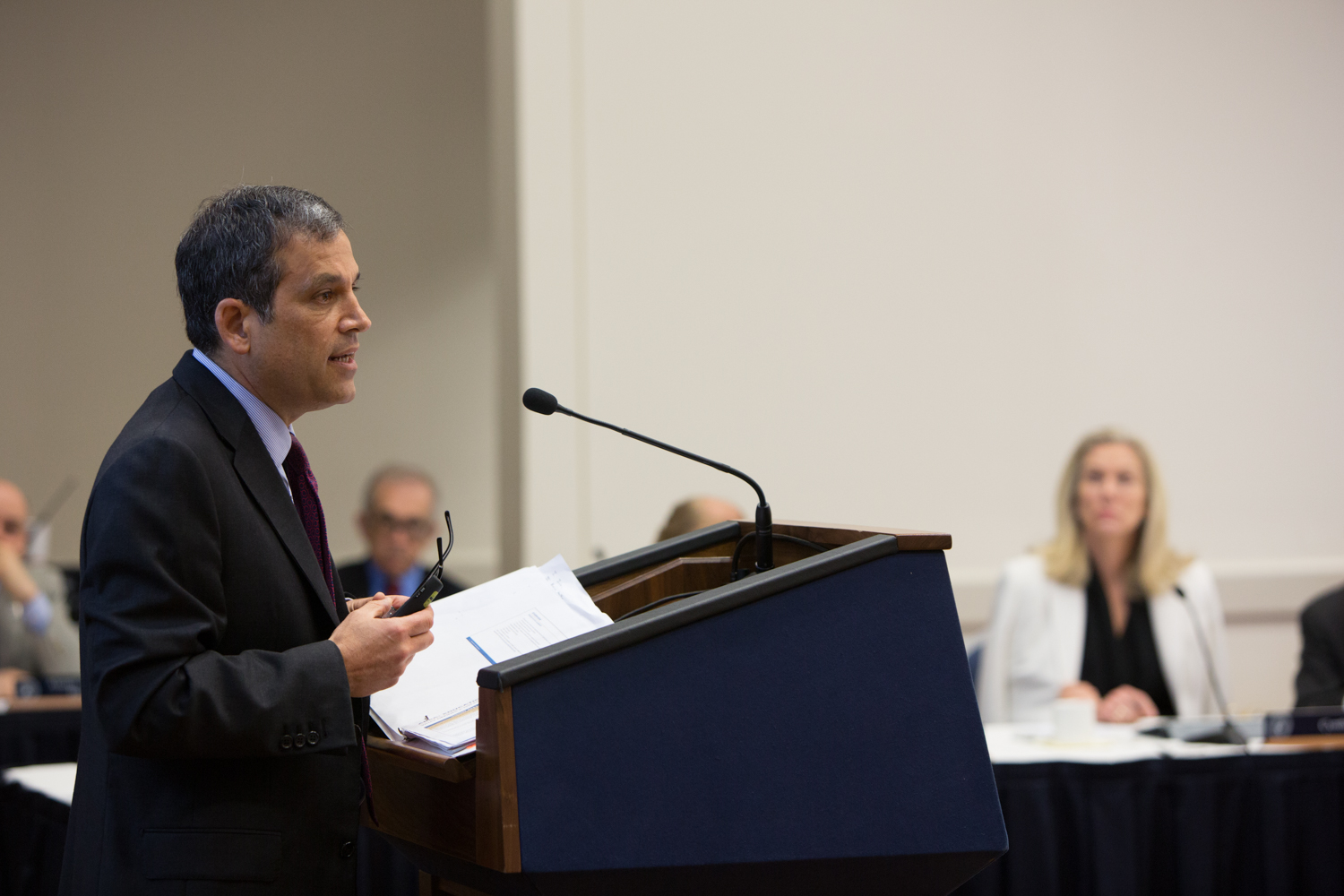The university is investing in diversifying its student body and fostering cross-disciplinary learning and research as called for in the strategic plan, Interim Provost Forrest Maltzman said at Friday’s Board of Trustees meeting.
Dr. Maltzman discussed how the university is working to meet objectives in four key areas of the strategic plan: international enrollment, campus diversity, cross-disciplinary learning and cross-disciplinary institutes.
The university has invested $1.1 million annually to achieve its goal of increasing international enrollment, he said. These investments include hiring a senior associate provost for international strategy, enhancing recruitment efforts for international students and expanding the English for Academic Purposes program.
GW’s international undergraduate population increased from 7 percent in 2011 to 10.1 percent in 2015 and graduate international enrollment from 12 percent to 17.8 percent. The strategic plan has targets of 12 to 15 percent for undergraduate international student enrollment and 25 to 30 percent for graduate enrollment.
The university anticipates next year’s freshman class meeting the strategic plan goal for undergraduate international enrollment. Based on deposits received for the incoming class, international enrollment will be in the range of 13 to 14 percent, Dr. Maltzman said. International graduate enrollment is also expected to rise.
One of the challenges for GW, he said, is that the increase in international enrollment is disproportionately from one country: China. “Our Chinese students are fantastic, but we recognize the need for increasing the number of students from other countries. We’re partnering with the schools to try to diversify our international student population,” he said.
A second challenge is improving the international student experience. “We’ve done a lot of benchmarking and surveying of international students to see where we need to improve our systems,” he said. The university has enhanced its career services for international students, among other areas, as a result of this benchmarking.
Another key goal in the strategic plan is increasing the enrollment of underrepresented minority groups.
Dr. Maltzman highlighted the university’s test-optional policy and new partnerships with nonprofit organizations, such as the Posse Foundation, as efforts to diversify the student body.
Thanks to these efforts, the university expects the underrepresented minority population in next year’s freshman class for the next academic year to be in the 17 to 18 percent range, said Dr. Maltzman. “We are on track to be much closer to, if not exceed, our peer institutions.”
Over the past several years GW has also created programming aimed at first-generation students and provided additional support to military and veteran students.
Challenges to increasing the number of underrepresented minorities in the student body include the cost of attendance, the retention and graduation rate of these students and, in some cases, the campus climate, he said.
Promoting cross-disciplinary learning is another key element of the strategic plan. “We want to train our students to think in an interdisciplinary way,” said Dr. Maltzman.
The university has developed a new budget model based on teaching and enrollment, established a general undergraduate curriculum and created new programs, such as a sustainability minor, that emphasize learning across disciplines.
In addition, a “What If” feature in the university’s DegreeMap online degree auditing program now enables students to explore degree requirements for programs other than the one they are currently pursuing.
The number of undergraduate students majoring or minoring in a school other than their primary school has grown from 676 in 2011 to 1,002 in 2015.
Schools are also collaborating to build new interdisciplinary graduate degree programs, such as Data Sciences and Regulatory Biomedical Engineering. “We think these innovative programs can be a competitive advantage,” Dr. Maltzman said.
Getting faculty buy-in and developing advising systems are some of the challenges to expanding cross-disciplinary learning, he said.
Along with interdisciplinary learning, the strategic plan calls for the creation of cross-disciplinary institutes to raise the research profile of the university. Since adopting the strategic plan, the university has established six interdisciplinary research institutes, including the Cancer Center and the Autism and Neurodevelopmental Disorders Institute, said Dr. Maltzman.
The management, assessment and financial sustainability of institutes that cross traditional boundaries has been a challenge, Dr. Maltzman said. The university will need to spend somewhat more than the $20 million to $30 million envisioned in the strategic plan to sustain these institutes, he said.
However, Dr. Maltzman said, these new institutes are clearly raising GW’s research profile. The additional funding has helped the university improve its National Science Foundation research ranking.
Dr. Maltzman closed his presentation by emphasizing the strategic plan was conceived as a living document. “We will continue to assess it routinely, and it will evolve over time,” he said.


